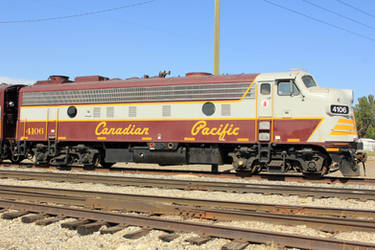ShopDreamUp AI ArtDreamUp
Deviation Actions
Suggested Deviants
Suggested Collections
Description
A bridge pedestal, or bearing plate, is an iron or steel casting that supports one corner of the bridge superstructure. The pedestal itself sits upon the abutment or a pier. This bridge is an abandoned single-track railroad bridge of the through-truss type (Whipple) built, by my estimation, sometime around 1890-1910 by the Chicago & NorthWestern on the now-abandoned line from Elgin north to Crystal Lake. It is part of a multi-span crossing of the Fox River at Carpentersville, Illinois, north of Dundee. The truss here spans from the eastern shore to a central island, and is supported by heavy timber pilings (visible at the bottom of the frame). The rails have been removed, but the deck cross-beams are mostly intact, allowing the intrepid (or foolish) photographer to traverse the entire structure. (The bridge is only a few feet above the water, which is only a few feet deep; not too dangerous, except to risk dunking my camera!) One of a group of shots for a study in textures.
The location of the bridge can be seen here [link]
Camera: Canon AE-1 SLR (35mm)
Lens: Canon type FD (fixed, 50mm)
Film: Kodak Tri-X silver-halide Pure Monochrome (ASA 400)
Exposure: f11 at 1/125.
Paper: Ilford MultiGrade IV RC (8"x10")
Number 1 of a series. Next in series
The location of the bridge can be seen here [link]
Camera: Canon AE-1 SLR (35mm)
Lens: Canon type FD (fixed, 50mm)
Film: Kodak Tri-X silver-halide Pure Monochrome (ASA 400)
Exposure: f11 at 1/125.
Paper: Ilford MultiGrade IV RC (8"x10")
Number 1 of a series. Next in series
Image size
1075x876px 462.22 KB
© 2004 - 2024 Sylderon
Comments2
Join the community to add your comment. Already a deviant? Log In
There is something about this that really teases the eye and the mind. There are a couple objects toward the bottom that look suspiciously like nuts and bolts, which suggests that the entire thing might be only a few inches tall at most. Yet the eye also catches a hint of the trusses (I think that is the right term, I'm not a civil engineer, so bear with me here) to suggest something much larger. To have both in one picture, and as parts of the same structure, really plays with the head. This is almost a photograhpic equivalent of an M.C. Escher, perhaps not in terms of the way it feels mentally. It creates the same kind of conflict between the left and right hemispheres of the mind. Very well done.
Oh, yeah, I just sort of surfed in by the way...
Oh, yeah, I just sort of surfed in by the way...


































